If you want to know what’s going on with the world geopolitically, follow the fashion business, said no one ever. Perhaps the irony is tickling then, that even as Russia was hosting its biannual fashion week as well as its second annual BRICS+ Fashion Summit in Moscow recently, India’s Prime Minister Narendra Modi and Russia’s President Vladimir Putin were having luncheon with the President of the People’s Republic of China, Xi Jinping, in Tianjin’s Shanghai Cooperation Organisation (SCO) summit. U.S. President Donald Trump — each one of the above country’s archenemy these days — found himself tweeting: “Look’s like we’ve lost India and Russia to deepest, darkest, China. May they have a long and prosperous future together!”
BRICS+ is a list of 10 countries: Brazil, Russia, India, China, South Africa, Egypt, Ethiopia, Indonesia, Iran and UAE, with several other countries participating in their international meetings and activities. “This is where the global conversation is shifting,” says Shirene Rifai, CEO of Jordan Fashion Week, who attended last year’s summit. “For too long, fashion was centred only in Paris, Milan, London and New York. Platforms like BRICS+ are creating spaces for non-western voices to be seen as equal players,” she says.
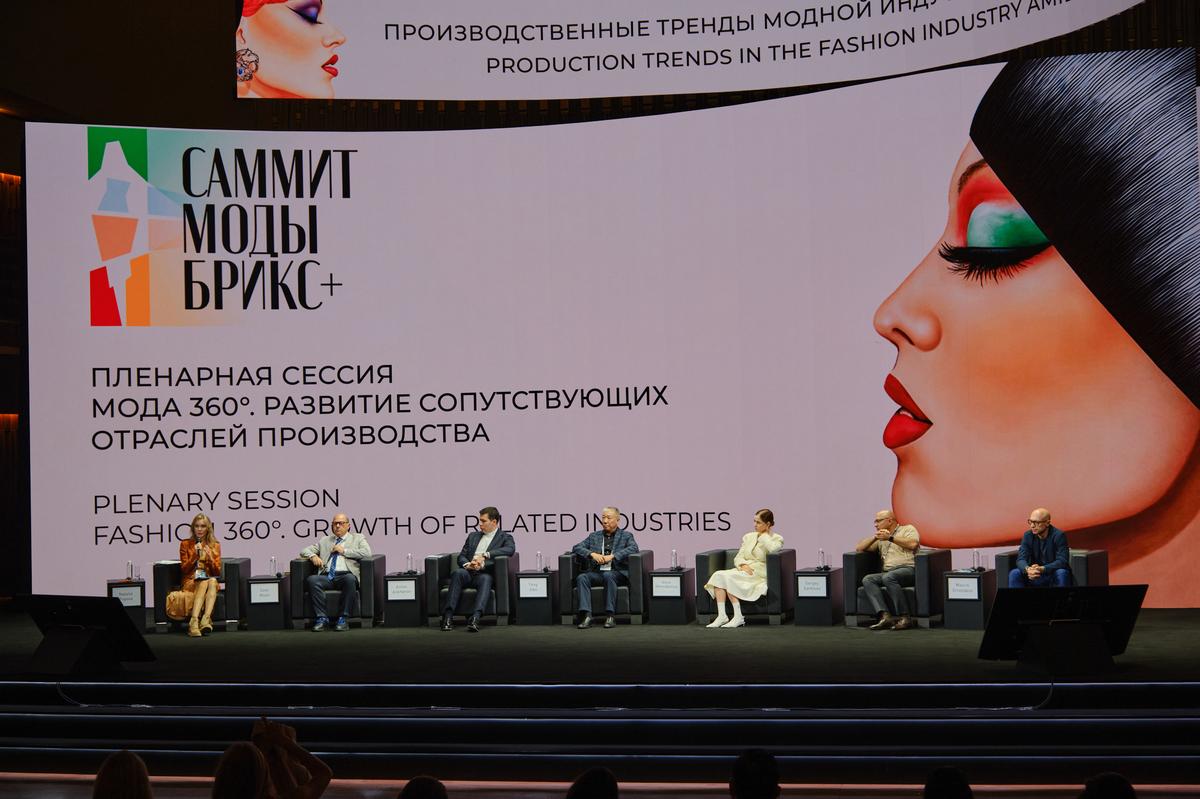
BRICS+ Fashion Summit
Europe’s sanctions on Russia, after its war on Ukraine in 2022, have impacted its industry. For example, Mercedes Benz pulled out of its title sponsorship of Moscow Fashion Week. The Week returned two years later, with independent unnamed sponsors. In 2024, they hosted their first BRICS+ Fashion Summit, which saw industry leaders from more than 50 countries sign a historic memorandum to form a new association that would fuel the world’s emerging economies. This aimed at shifting the centre of gravity from Europe and the USA to newer markets, especially China.
Drama in the capital
BRICS+ is especially important for India, which has long played a role in the global textile and garment industry, but has always been treated as a manufacturing hub or supplier of labour. Its ideas and talents have not been incorporated into Euro- or U.S.-centric fashion.

BRICS+ Fashion Summit
The International Monetary Fund in 2024 of the G7 and BRICS showed the gross domestic product (GDP) in purchasing power of the two groups was equal, with the BRICS countries ahead by 1%. But by May 2025, the latter was reported to have outperformed the global average, accounting for 40% of the world’s economy.
Russia’s image across the world is a bit like Baba Yaga, a legend from its famous folk tales. In some stories, she’s a kind and benevolent old woman who lives in a forest, in others she’s a child-swallowing witch. But for this writer, as a frequent visitor at Moscow Fashion Week, seeing the country and its style from up close has been eye-opening.
This season the fashion week launched a ‘Made in Moscow’ project, an initiative that supported local brands. The venue also moved from the grand Manege, a historic exhibition hall, to the more modern Zaryadye Park, a large modern structure in the middle of one of the city’s large parks, that has an amphitheatre, a concert ground, multiple auditoriums and large corridors for an assortment of activities.
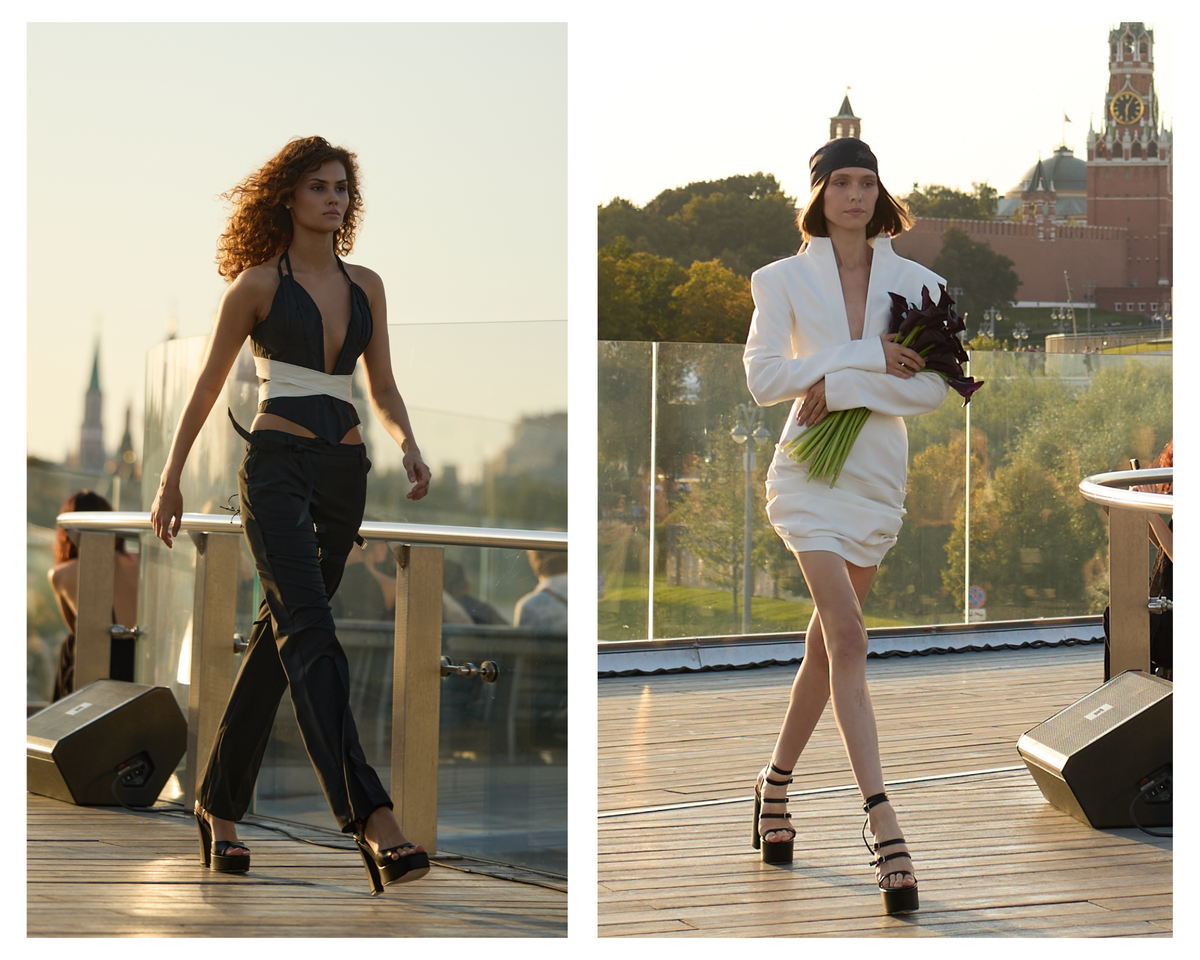
Models at Zaryadye Park
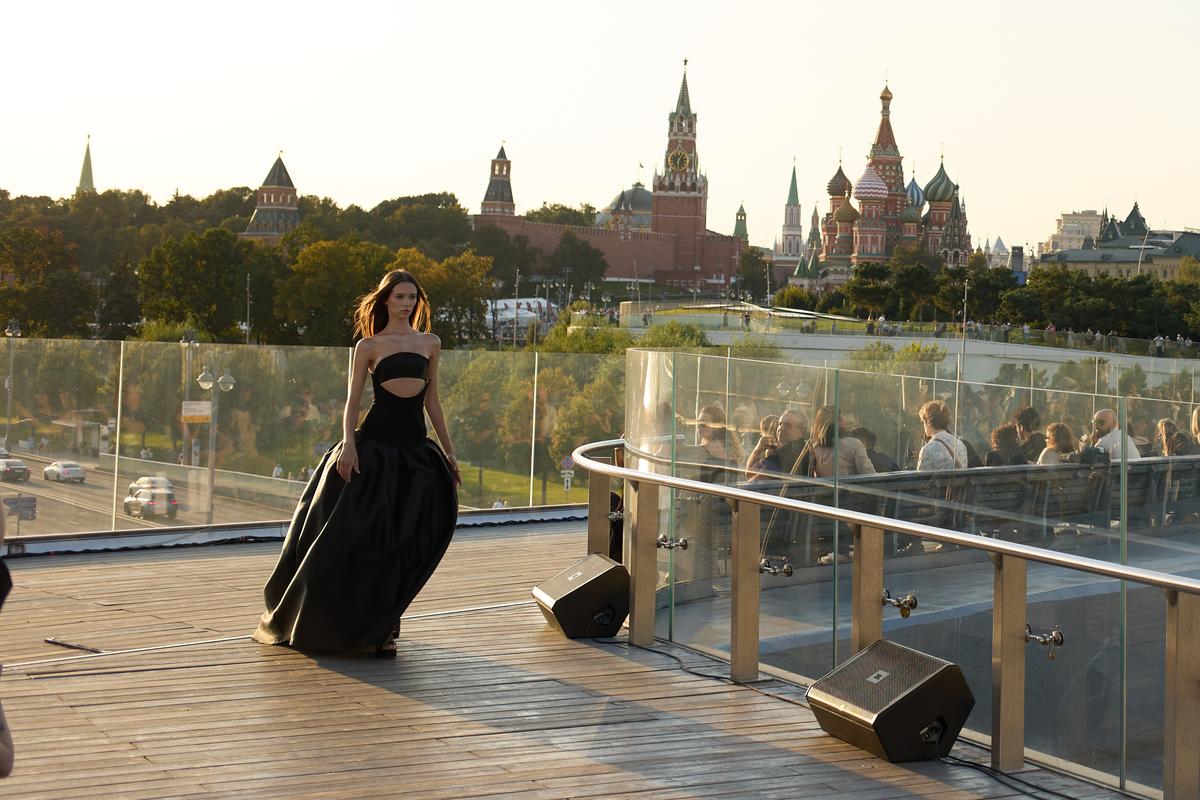
Additionally, touristy venues were thrown in for added drama. The Pushkin Museum hosted a fashion show (Dior’s shows are often at Paris’ Musee de Rodin), label Ruban hosted another one in the fairytale-esque garden of Leo Tolstoy’s home. Moscow’s famous Floating Bridge, a glass-walled structure that offers views of the imperial Moskva river, became a gorgeous runway too, as did the Bolotnaya Square, the Artplay Design Centre and such. It’s a bit like Paris, where the whole city celebrates when a fashion week is on.
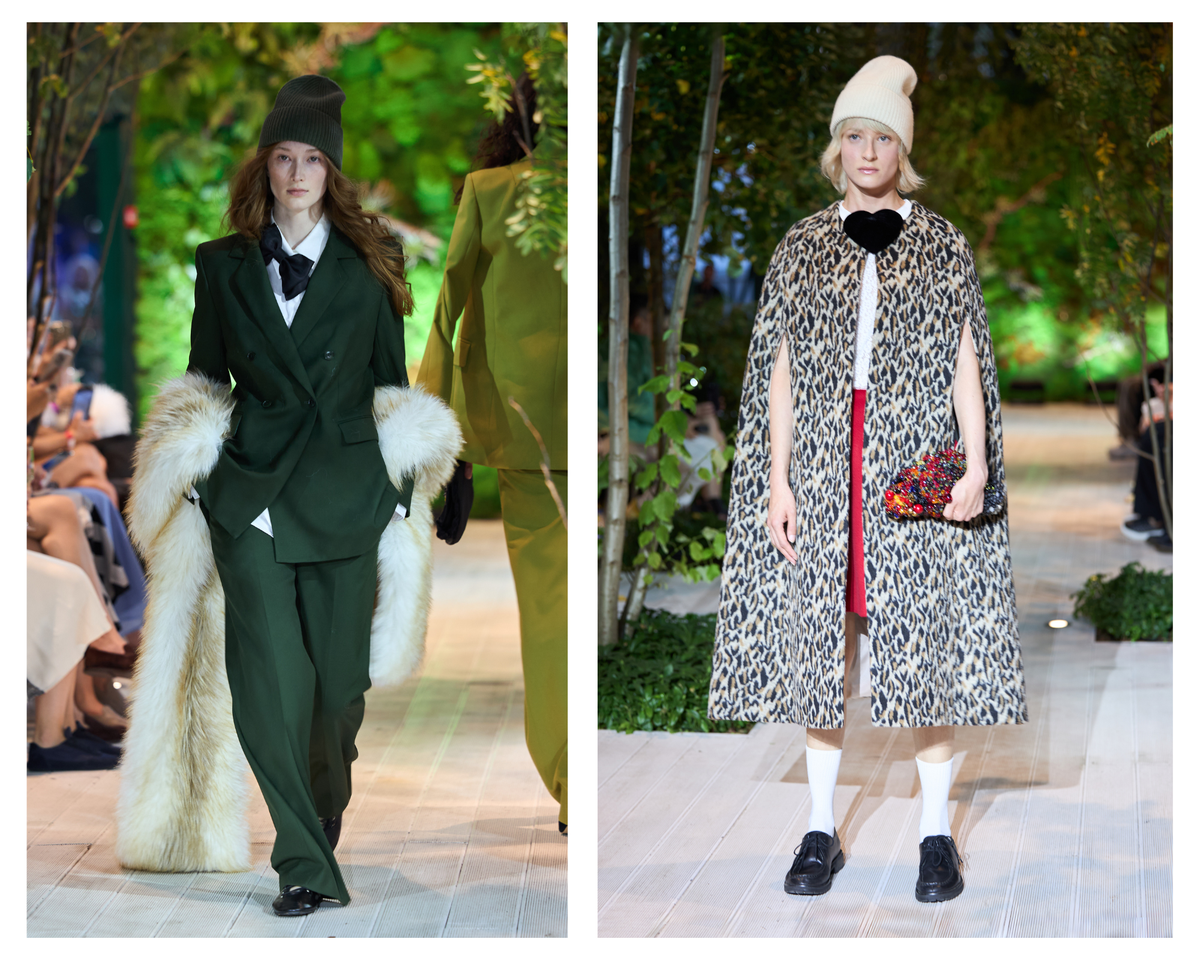
Made in Moscow at Bolotnaya Square
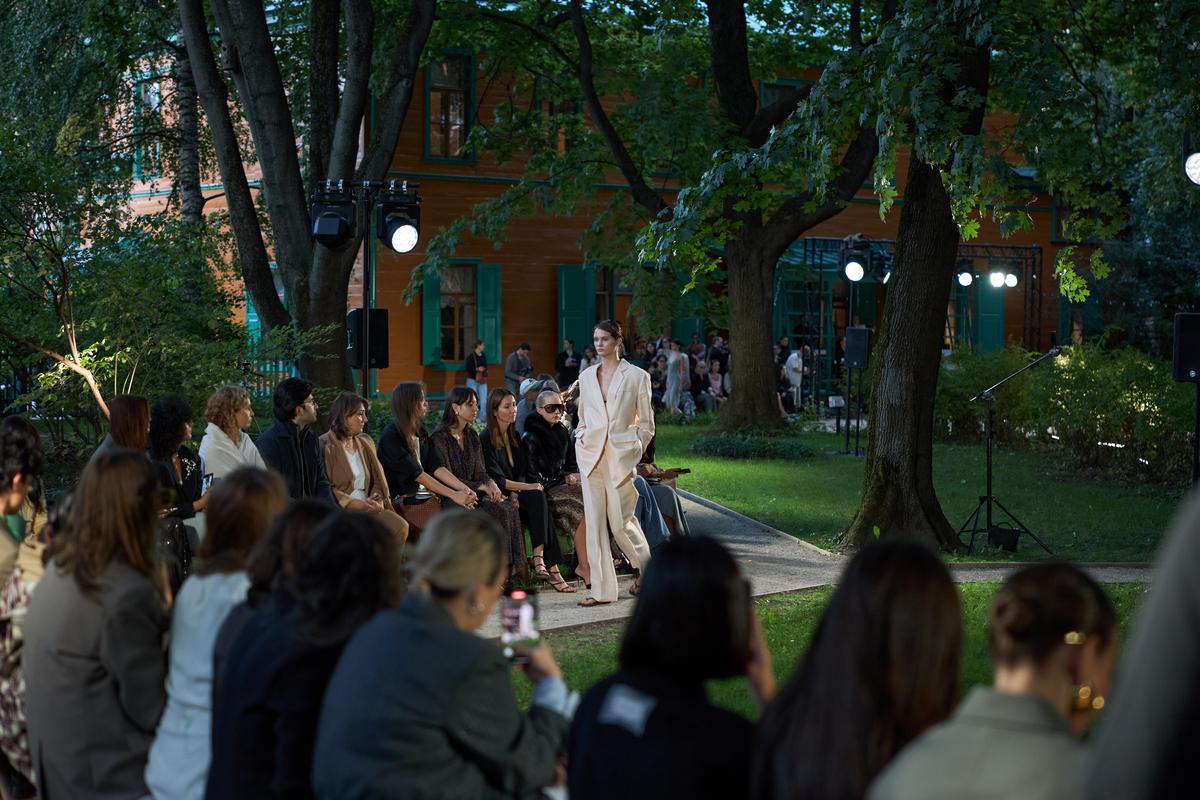
Models walk in the garden at Leo Tolstoy’s house
‘Young Russia is edgy and confident’
Nearly 70 designers from Russia took part — besides one from China, India, Turkey, Spain, Greece, Jordan, Nicaragua, Guatemala and some other countries. This year, India’s Fashion Design Council of India (FDCI) sent designer duo Shantnu & Nikhil. “This season [India’s fourth] too, we took a stall and had many queries. So, business to consumer sales have started,” says FDCI president Sunil Sethi. “We intend to increase the participation next year onwards.”
While each Russian label had something unique to showcase, all of young Russian fashion was mindful, thought-provoking, rebellious, and involved beautiful treatments on natural fabrics. Russia once designed opulently for the wives and mistresses of oligarchs, reminding one of India’s bridal couture market. But today it has become a template for streetwear. Designers such as Shantnu & Nikhil, Samant Chauhan and Nitin Bal Chauhan and (who have shown here recently), however, missed the memo. They showed lavish collections for a Russia that barely exists now.
Young Russia is rebellious, edgy and confident of its place in the world. It’s also hugely inspired by Russia’s music and nightclub scene. Never mind all the imperial glory of the U.S.S.R., the Russian Federation was born only in 1991. This young country is making itself heard on its own terms. One such label was Sol. The young designer Olga Selivanova hosted her show across a red brick wall just outside the auditoriums. She had beautifully layered clothes, playing around with textures, prints and dyes.

Fashion show at Pushkin Museum
| Photo Credit:
Konstantin Glazkov
Similarly, Ermi, a menswear label, stayed within its charcoal colour palette but put together many excellent pieces and styles that worked together so well, one could get dressed in the dark. Ogo played with denim, one of Moscow’s favourite fabrics (the other two are wool and leather, and there’s also linen). Popular label Za-Za played with form and volume and sent out clothes that were sculpted art works in themselves. I especially loved his use of petals, sometimes as lapels and at other times as headgear.
“Russian fashion is very diverse, and inspired by many subcultures, such as gothic, country, and even cyberpunk,” says fashion translator Ksenia Shalygina. “There is also a small group that follows the influence of the aesthetic of the 2000s, coffee dates, expensive cars and clothes with logos.” Tailoring and experimenting with surface textures is Russian fashion’s favourite pastime. Red September is a gorgeous streetwear label, Imkmode reminds one of Thierry Mugler. Rogov is a popular stylist and influencer who has turned designer.
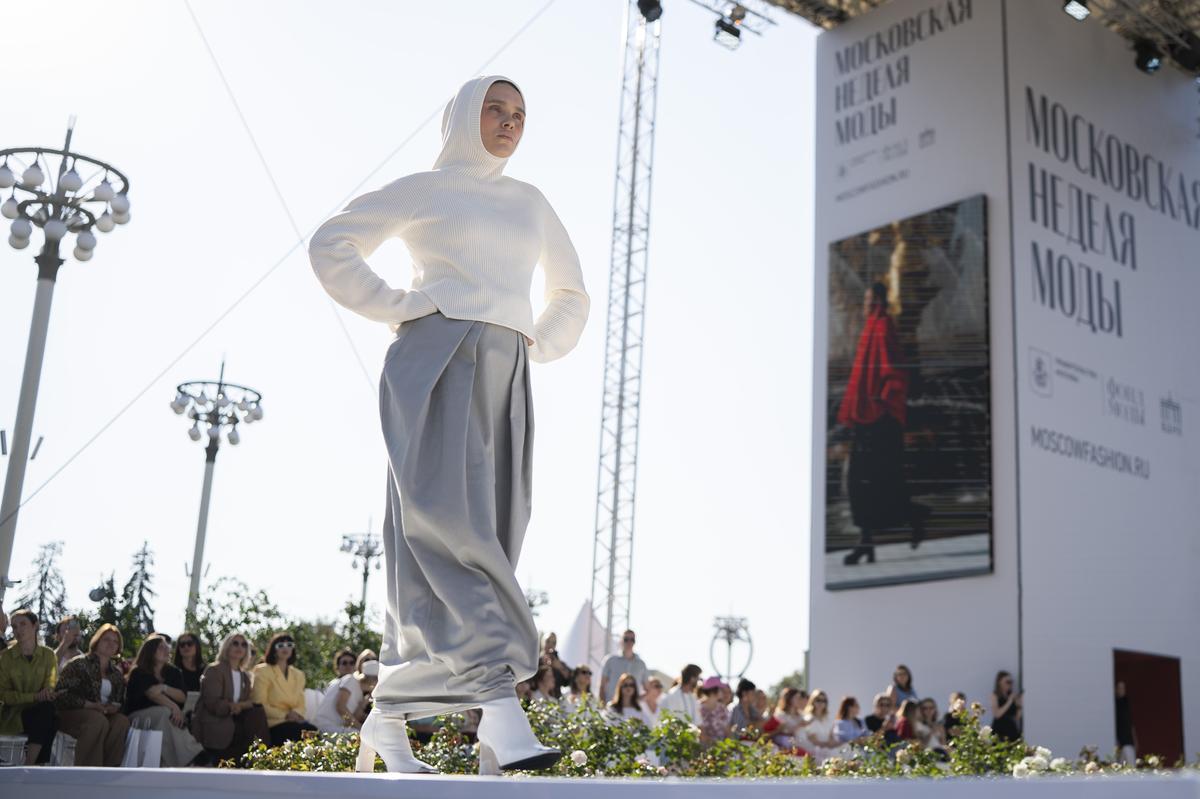
Runway at the VDNH
| Photo Credit:
Konstantin Glazkov
Slava Zaitsev, Ulyana Sergeenko (dressed Lady Gaga), Valentin Yudashkin, Alena Akhmadullina (dressed Malaika Arora), Rasario (dressed Priyanka Chopra, Ananya Panday, Jahnvi Kapoor as well as Lauren Sanchez) and David Koma are well known global names.
Earlier this year, Demna Gvasalia from Georgia (formerly U.S.S.R.) was named chief designer of Gucci after reviving Balenciaga. Imagine a world where 10 such Demnas dominated luxury labels. It would make it harder for both the U.S. and Europe to ignore Russia’s influence on global runways.
The writer is a seasoned fashion journalist who believes the world’s economy can be ascertained by the length of hemlines.

